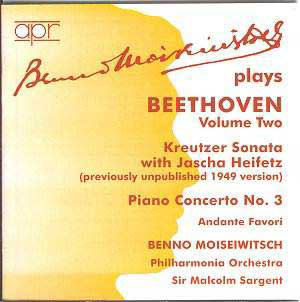 Composer: Leos Janacek
Composer: Leos Janacek
Works: Pohadka, Presto in E minor, Violin Sonata, Capriccio, Concertino, From the Street 1 X 1905, In the mists, Reminiscence, On the overgrown path, Three Moravian Dances
Performers: Mikhail Rudy, piano; Gary Hoffman, cello; Pierre Amoyal, violin; Soloists from l’Orchestre de l’Opera National de Paris conducted by Sir Charles Mackerras
Recording: Salle Ravel, Opera-Bastille June 1995 (Pohadka, Presto, Violin Sonata, Capriccio, Concertino) and Eglise du Liban, Paris March 1990 (From the Street, In the mists, Reminiscence, On the overgrown path, Three Moravian Dances)
Label: EMI
Leos Janacek’s oeuvre occupies a unique space in the pantheon of early 20th-century music, blending folk idioms with intricate psychological depth. His works often reflect intense personal and nationalistic sentiments, rooted in the cultural life of Moravia and Silesia. This double disc features a selection of Janacek’s chamber and solo piano music, showcasing the composer’s ability to convey profound emotion through relatively terse musical language. The recording presents a broad spectrum of Janacek’s stylistic evolution, from the early, folk-derived pieces to the more complex textures and ideas of his later works.
Mikhail Rudy’s interpretations across this recording are noteworthy for their introspective quality. In the Violin Sonata and the chamber works, Rudy’s approach is characterized by a delicate balance of lyricism and precision. His playing illuminates Janacek’s harmonic language, which often veers towards the unconventional and dissonant. A comparison with Rudolf Firkusny’s celebrated renditions reveals distinct interpretive choices; where Firkusny might embrace a more assertive and abrasive style, Rudy opts for a softer, more pliant touch. This can be heard in the first movement of the Sonata, where Rudy’s nuanced phrasing brings out the lyrical undercurrents of the music, contrasting with Firkusny’s more aggressive stance.
The ensemble performances, with Gary Hoffman and Pierre Amoyal, maintain a high standard of musicianship. In the Concertino, the rapport among the musicians is palpable. Sir Charles Mackerras’s conducting further enriches the interpretation, as he deftly navigates the orchestral textures and highlights the dramatic contrasts inherent in Janacek’s writing. The orchestration is carefully balanced, allowing the intricate interplay between the instruments to shine through. Notably, in “From the Street,” the tension between the thematic material and its emotional weight is expertly handled, revealing the stark contrasts that Janacek so often employs.
Sound quality plays a critical role in this recording; the engineering captures the vibrant colors of the piano and strings with clarity and warmth. The acoustic spaces of Salle Ravel and Eglise du Liban enhance the richness of the performances, allowing the listener to appreciate the distinct tonalities and articulations of each instrument. The overall engineering quality is commendable, providing an immersive listening experience that complements the interpretive depth of the performers.
Rudy’s authoritative presence as a Janacek interpreter is well-established in this disc, carving out a distinctly personal interpretation of the composer’s intricate dialogues. His ability to navigate the fine line between introspection and emotional veracity places him among the notable interpreters of Janacek’s music. The interplay between solo and chamber works also serves to illustrate the evolution of Janacek’s musical vocabulary.
This recording stands as a significant contribution to Janacek’s discography, appealing to both seasoned enthusiasts and new listeners alike. It offers a compelling exploration of Janacek’s diverse output, enhanced by the thoughtful interpretations of Rudy and his collaborators. Strongly recommended for anyone seeking to deepen their understanding of this remarkable composer.



